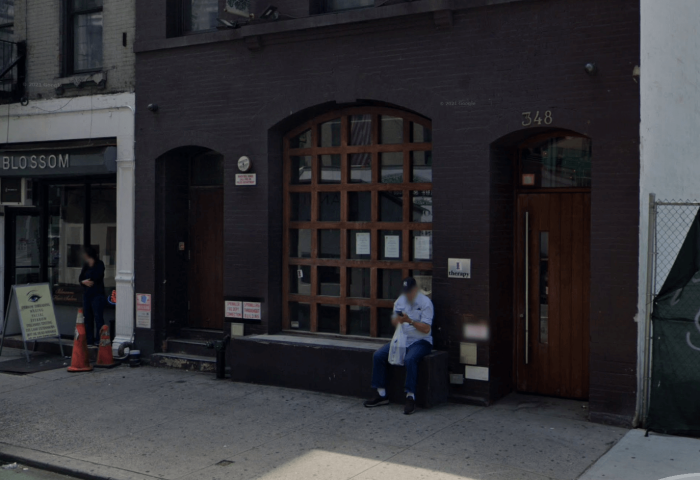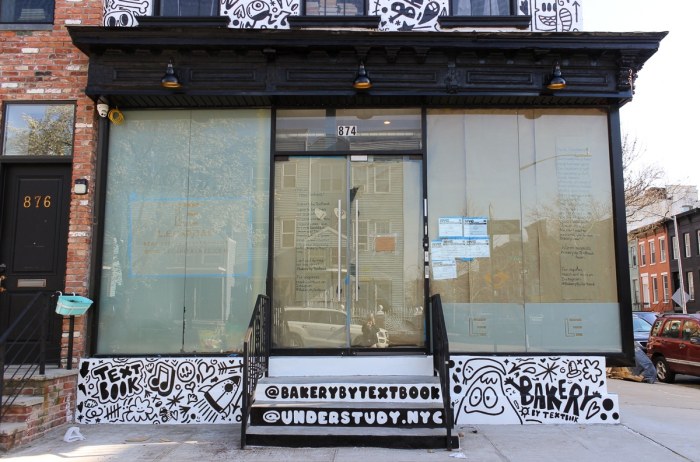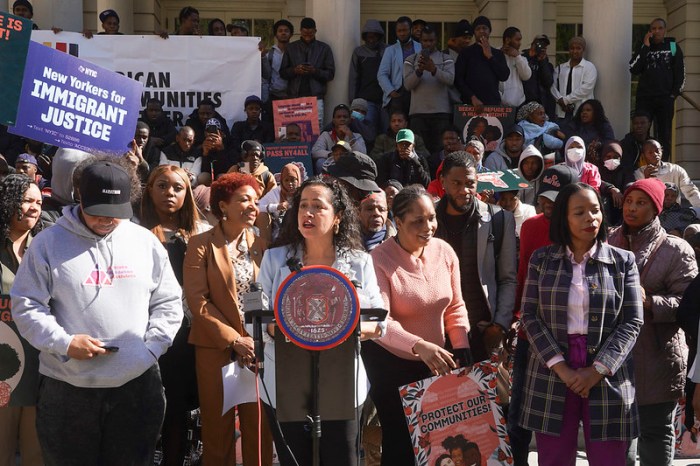Whether strolling through the Village during the day or walking in the darkness after a late night out, we met Leslie Cohen — even if we didn’t realize it.
Following a cancer diagnosis, the out lesbian nightlife pioneer and LGBTQ activist passed away in March just weeks after publishing her memoir, “The Audacity of a Kiss.”
The Queens native lived in Miami with her longtime partner and wife of over 45 years, Beth Suskin. Cohen’s tragic and sudden passing brought tears to the faces of many queer individuals who looked to her with a sense of joy and freedom. After all, she is a permanent fixture within the community: She’s been eternalized in George Segal’s “Gay Liberation” sculpture in Christopher Park, where she sits in lacquered bronze with Beth’s hand upon her thigh. The sculpture is a reminder that Cohen’s work helped shape the LGBTQ nightlife scene we know and love today.
“I met Les when I was in law school,” said Elizabeth Schwartz, an attorney, activist, and author. “Leslie was throwing a party at a bar in Miami Beach called Kremlin, and when I met Leslie and Beth, it was just a love connection.”
Schwartz is one of many people Cohen touched throughout her lifetime. Cohen and Suskin’s relationship and marriage served as a model for many others who knew them.
“I think of all her accomplishments, she was most proud of her relationship with Beth,” Schwartz says. “They put their relationship first above all things. And that was not always an easy thing to do.”
But before Cohen’s successful marriage and life in Miami, there was Sahara. In 1976, Cohen, Michelle Florea, Barbara Russo, and Linda Goldfarb opened Sahara in New York City. It was the first bar owned and operated by women for women.
“We were 26! We just didn’t know better,” Florea said.
Cohen knew how to curate experiences — from art galleries that attracted celebrities like Andy Warhol to fundraisers with the cast of “Saturday Night Live” — and Sahara was no different.
“It was truly Leslie that made the club as iconic as it was,” explained Florea, who said the unique and glamorous venue still burns bright in her mind more than 40 years later. “It was the most amazing women’s bar — on the Upper East Side… Inside it was decorated; it was carpeted… We had cane chairs. it was just really beautiful. We had art on the wall… The truth is, I’m a producer, so I made the club happen, but Leslie’s the one that really gave it its name.”
Of course, opening a club as four women wasn’t easy during the ‘70s. Their nearest male relative was required to sign in order to get a liquor license. It was a time when lesbian bars — and many gay bars — were owned by the Mafia, and the DSM had classified homosexuality as a mental illness until 1973. In the years after that was finally lifted, Cohen and her lesbian friends took initiative. The owners would hand roses to women as they walked through the door. Everything about Sahara was intentional.
“At the time, women couldn’t even get their own credit card without their husbands co-signing,” Schwartz said. “So [Cohen] was very proud of making Sahara happen and it being so successful.”
The dazzling women’s bar welcomed celebrities such as Pat Benatar, Gloria Steinem, Jane Fonda, and others. Even Salvador Dalí walked through its doors. That’s because there was something different about Sahara. It was more than just a club. The girls would host massive events and fundraisers for political candidates. Cohen would book the hottest musicians. It was the place to be.
The club’s success paved the way for Cohen to become a queer nightclub promoter doing events in the Hamptons and South Florida for decades after Sahara closed in 1979. She just wasn’t like other party promoters. Schwartz said Cohen loved to have deep conversations with many partygoers she met.
“It was very unusual for the nightlife crowd,” Schwartz noted. And of course she had a lot going on aside from that. She was very politically aware, was an ardent feminist, and she believed in beauty and in truth.”
After the nightclubs and art curating, Cohen did even more. At 40 years old, she went to law school at NYU. She and Suskin then moved to Miami, where Cohen practiced law and the two remained together, building friendships, having deep conversations, and inspiring the gay community. Last year, Rutgers University Press published her aforementioned memoir, which tells the stories of her life with Suskin, Sahara, the sculpture, and more.
Cohen remained her passionate, caring self up until the end. She made others feel at ease about her impending death.
“She was at peace,” Schwartz said. Cohen reassured her, saying, “‘You know what? I’m fine, I’ve been everywhere, I’ve done everything. I’ve had an amazing wife, I’ve had an amazing life. I got my book out, so I’m okay.”
At a small gathering dedicated as a celebration of her life, Schwartz mentioned that everyone spoke about Cohen’s contagious personality. She lit up the room. She was bright and loving, but also honest and vulnerable, no matter what it was she was doing. At first, she was hesitant to write her memoir, thinking it’d be too egotistical of her. But after some convincing, she knew her story would encourage others.
In Leslie Cohen’s death, we are reminded of her rich life and thankful for her braveness, generosity, and beautiful power. Her art portfolio, full of every personal invitation she designed, is being sent to the Lesbian Herstory Archives in Brooklyn, where the important stories of fighters like Cohen are being preserved.
“I want to do anything to keep her name out there,” Florea said. “When I picture her now, she’s upstairs in the disco. She’s got a flannel shirt rolled up at the sleeves and open to her navel. She’s got jeans on and she’s wearing boots and she is just lost to the music.”
To help support fighters like Leslie Cohen and donate to the Lesbian Herstory Archives, visit lesbianherstoryarchives.org.
Our sister publication, Dan’s Papers, ran a Q&A with Cohen last December. Read that interview here.



































